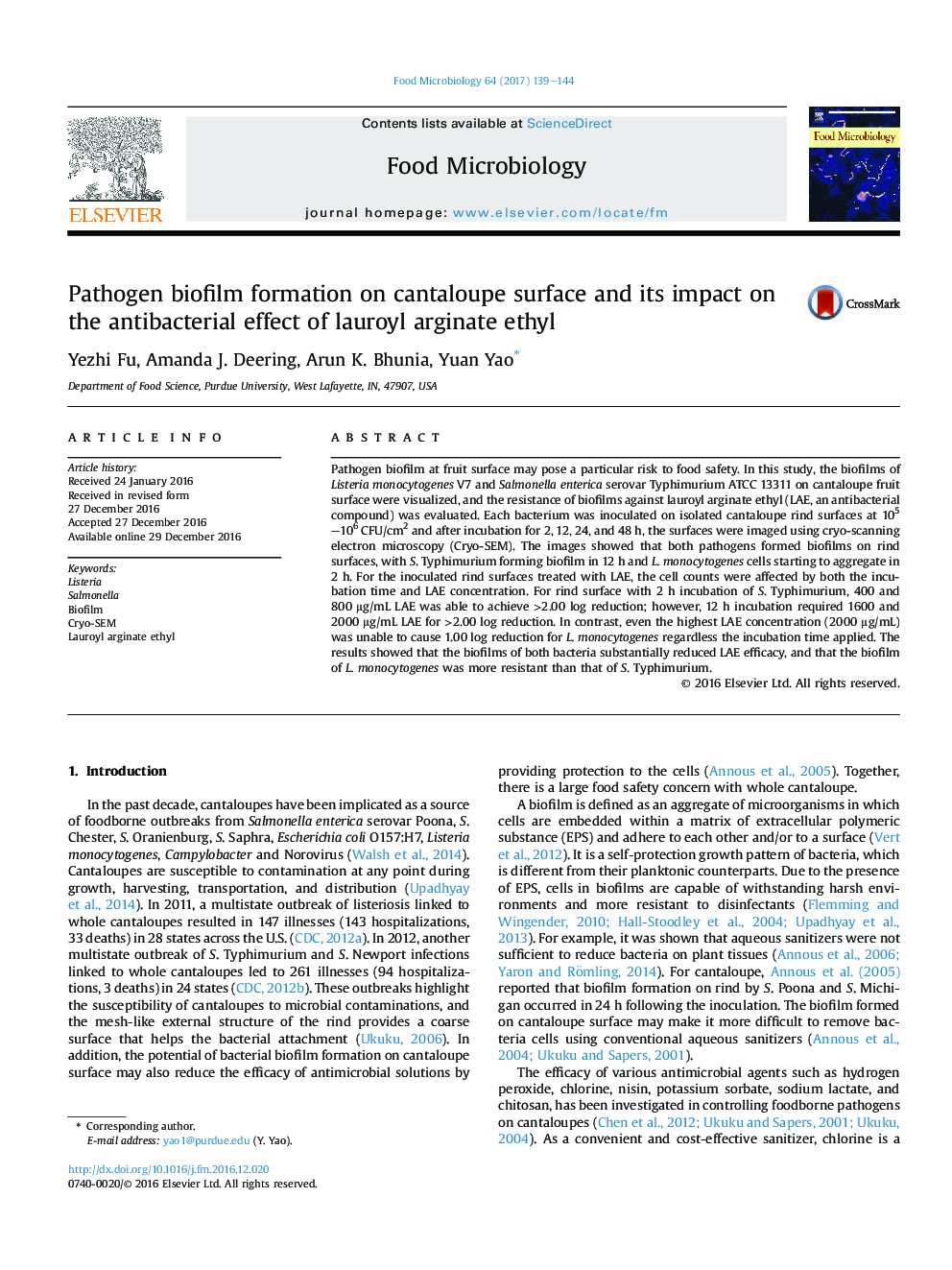| کد مقاله | کد نشریه | سال انتشار | مقاله انگلیسی | نسخه تمام متن |
|---|---|---|---|---|
| 5740219 | 1616237 | 2017 | 6 صفحه PDF | دانلود رایگان |
- Cryo-SEM was introduced to image pathogen biofilms on the surface of cantaloupe fruit.
- Both L. monocytogenes and S. Typhimurium could form biofilm following their introduction on cantaloupe rind surface.
- The resistances of test strains to lauroyl arginate ethyl (LAE) were significantly enhanced due to biofilm formation.
- On cantaloupe rind surface, L. monocytogenes was more resistant to LAE than S. Typhimurium.
Pathogen biofilm at fruit surface may pose a particular risk to food safety. In this study, the biofilms of Listeria monocytogenes V7 and Salmonella enterica serovar Typhimurium ATCC 13311 on cantaloupe fruit surface were visualized, and the resistance of biofilms against lauroyl arginate ethyl (LAE, an antibacterial compound) was evaluated. Each bacterium was inoculated on isolated cantaloupe rind surfaces at 105-106 CFU/cm2 and after incubation for 2, 12, 24, and 48 h, the surfaces were imaged using cryo-scanning electron microscopy (Cryo-SEM). The images showed that both pathogens formed biofilms on rind surfaces, with S. Typhimurium forming biofilm in 12 h and L. monocytogenes cells starting to aggregate in 2 h. For the inoculated rind surfaces treated with LAE, the cell counts were affected by both the incubation time and LAE concentration. For rind surface with 2 h incubation of S. Typhimurium, 400 and 800 μg/mL LAE was able to achieve >2.00 log reduction; however, 12 h incubation required 1600 and 2000 μg/mL LAE for >2.00 log reduction. In contrast, even the highest LAE concentration (2000 μg/mL) was unable to cause 1.00 log reduction for L. monocytogenes regardless the incubation time applied. The results showed that the biofilms of both bacteria substantially reduced LAE efficacy, and that the biofilm of L. monocytogenes was more resistant than that of S. Typhimurium.
Journal: Food Microbiology - Volume 64, June 2017, Pages 139-144
